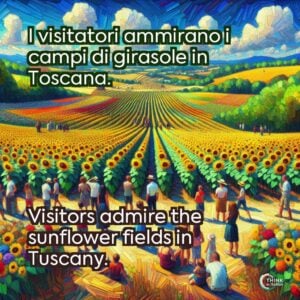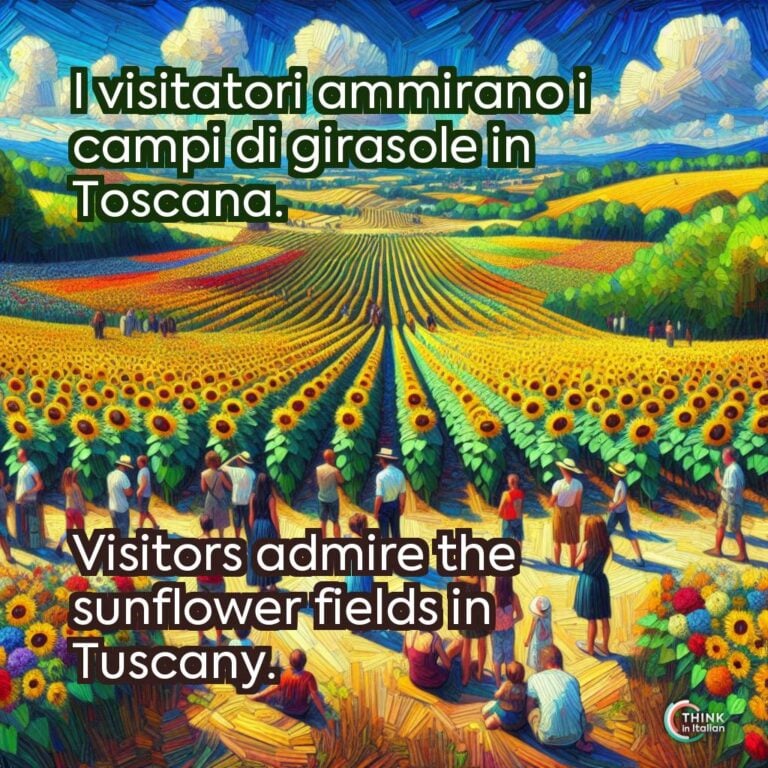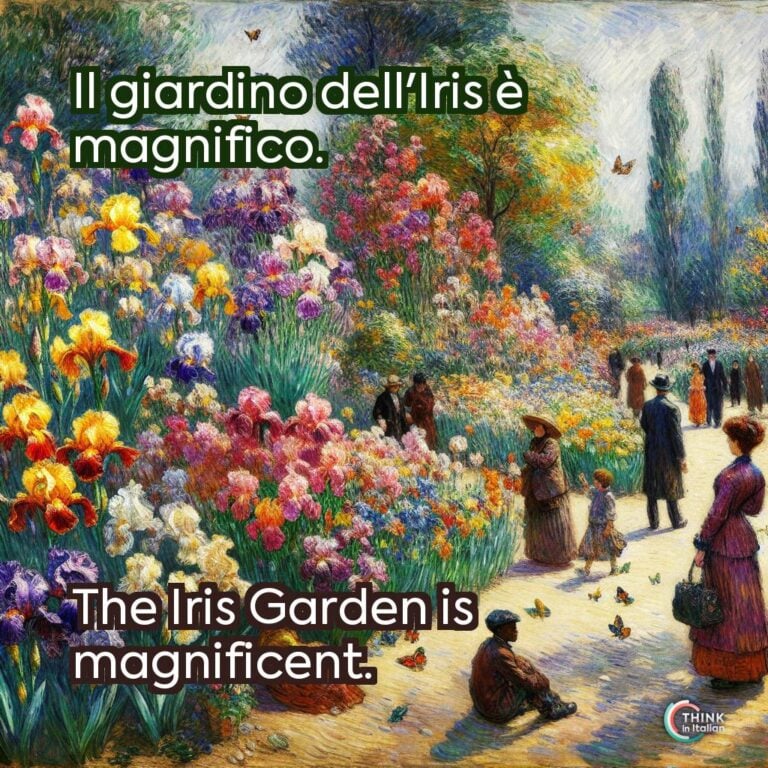The National Flower of Italy
Italy’s relationship with flowers is as vibrant and diverse as its landscapes, weaving together history, culture, and natural beauty.
Italy’s national flower is la pianta di corbezzolo (the strawberry tree). It is often overshadowed by the popular associations of Italy with roses and lilies, yet the corbezzolo holds special significance for its colors.
With its green leaves, white flowers, and red berries, it mirrors the Italian flag. It became a patriotic symbol during the Risorgimento, the 19th-century movement for Italian unification.
Its resilience and beauty were celebrated in Giovanni Pascoli’s poem Arbutus Unedo, which highlights its connection to Italy’s spirit and heritage.
The strawberry tree thrives in Mediterranean regions, especially in central and southern Italy. Sardinia and Lazio are prime areas to admire this emblematic plant.
Italian Flowers: Where to see Them
Florence: la Città Gigliata
Florence is known as la città gigliata (the lily city). Its emblem is il giglio fiorentino, a red iris on a white background, not a lily as its nickname suggests.
This symbol has represented the city for over a millennium and is a testament to Florence’s rich history. Florence’s devotion to the iris is evident in the Giardino dell’Iris, a garden dedicated to this iconic flower.
It is open in late April and early May, and showcases rare varieties from around the world against the backdrop of the Tuscan hills.
Even Dante Alighieri referenced the iris in La Divina Comedia (The Divine Comedy), underscoring its significance in Florence’s identity. Today, the iris symbol is proudly displayed by the Fiorentina soccer team.
Castelluccio di Norcia: a Natural Floral Masterpiece
The plains of Castelluccio di Norcia come alive each June and July during the fiorita (flowering). This regions is known for its lentil crops, which transform the landscape into a kaleidoscope of poppies, daisies, violets, and lentil blooms.
After the devastating 2016 earthquake, the fiorita became a beacon of hope and renewal, attracting visitors eager to see the valley in full bloom.
Whether you hike, bike, or take a stroll, the fields offer stunning views and endless opportunities for photography. Timing varies yearly, so check local updates before planning your visit.
Val di Non: Apple Blossom Paradise
In Trentino-Alto Adige, the Val di Non is renowned for its apple orchards. Each spring, usually in mid-April, the region celebrates the Fiorinda Festival, which marks the blooming of these orchards.
The festival combines nature and culture. There are guided tours, tastings of local apple delicacies like strudel di mele (apple strudel) and vino di mele (apple wine), live music, and traditional dances.
The pink and white apple blossoms stretch across the landscape, filling the air with their sweet fragrance, a true sensory delight.
Tuscany: Sunflower Fields
Summertime in Italy brings golden fields of my favorite flower ever: girasoli (sunflowers). Regions like Tuscany and Maremma are particularly famous for these cheerful blooms.
The best places where I could see Italian sunflowers are near Siena, San Gimignano, and Castiglione della Pescaia. If you are a photography lover or simply enjoy wandering in nature, you must go there.
The sunflower season is short, peaking in late June or July, so make sure you organize your holiday in Italy properly. Early mornings and late afternoons provide the best light for capturing their vibrant hues.
Infiorata: Italy’s Flower Carpets
Every year, Italy’s infiorata transforms streets into breathtaking works of art. It is held during Corpus Christi, the 60 days after Easter, and it features intricate flower carpets crafted from petals, seeds, and leaves.
The most famous locations where you can see this amazing show are Noto, in Sicily, Genzano di Roma, in Lazio, and Spello, in Umbria.
Artists spend months planning these masterpieces, which often depict religious motifs, famous artworks, or contemporary scenes. Celebrations include parades, music, and local delicacies.
If you want to witness Italy’s flower carpets in these cities, my advice is to arrive there as early as you can or to stay longer after the end, to enjoy the festivities that often accompany the dismantling of the designs.






